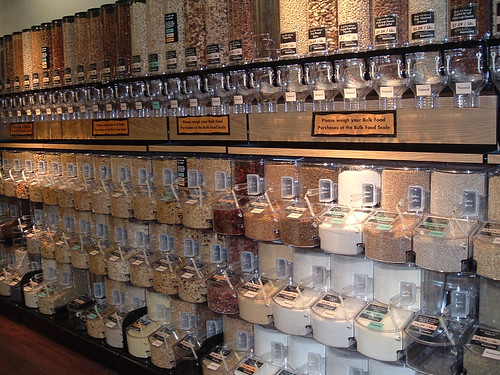Saturday, February 7, 2009
Grain Mill and exercise?
"It needs re-gearing. It will grind about 1 cup of flour per minute, or so."
What a great idea! Get exercise while treading out the grain! Great pics of the tricycle too...
What kind of grains do I use in my grain mill?

image copyright: Summer stored for winter
Types of Wheat and Its Flours
By Trinh Lieu
The following types of wheat are classified based primarily on color, hardness of the kernel, and time of year the wheat is planted.
- Hard red winter
- Soft red winter
- Hard red spring
- Hard white
- Soft white
- Durum
Generally, flours that are milled from hard wheat have high quality gluten and are considered strong.
Due to the difference in quality among many types of wheat, millers typically blend flours to achieve a consistent product time after time. Readily available to most home bakers, all purpose flour is actually a blend of hard and soft wheat flours.
Regardless of the type of wheat, milling the endosperm of wheat berries or kernels yields white flour. This process also removes so much natural nutrients and vitamins that subsequent enrichment can never completely replace them. Therefore, enriched white bread is by no means nutritionally equal to whole wheat bread.
In addition, "wheat bread" on the label does not mean that it is made from whole wheat flour. It is just to distinguish the bread from those made from other types of grains.Breads made from whole wheat flour should normally have "whole" or "100 percent whole" before the term "wheat bread".
Compared to whole wheat flour, white flour
- Has a longer shelf life
- Contains more gluten proteins per weight
- Is more digestible
Although whole wheat flour and graham flour are often used interchangeably, there is a minor physical difference. In the milling of graham flour, the outermost part of the wheat berries(bran) is not as finely ground as the germ and endosperm.
Finally, all flours tend to lose moisture during storage. Moisture content also varies by brands and seasons. Therefore, as home bakers of breads, cakes, and cookies, we may sometimes need to adjust the amount of flour used in a particular recipe. This is to maintain a desirable flour to liquid ratio.
The author of this article loves to bake breads and cookies. Visitors to her Web site, Baking Perfect Homemade Cookies With Five Essential Rules, can enjoy insightful information on cookie ingredients, helpful baking tips & techniques, and many easy cookie recipes with illustrative images.
Copyright 2006 by Trinh Lieu
Article Source: http://EzineArticles.com/?expert=Trinh_Lieu
http://EzineArticles.com/?Types-of-Wheat-and-Its-Flours&id=177280
Friday, February 6, 2009
How to Choose Your Wheat Mill
"PURCHASING A MILL
1. Why is a mill an important purchase?
A. I think a mill is extremely important to better health. Even if you go slow on other things, freshly ground grains as opposed to stale, rancid flours will make a HUGE difference. I would get a mill and grind whole grains or find a good source of freshly ground flour."
Where Can you Buy organic Whole Grains Bulk?

image copyright: The Wall
Buy organic whole grains such as wheat grain, quinoa grain and brown rice, including wheat germ and wheat flour and spelt.:
"Buy organic whole grains such as wheat grain, quinoa grain and brown rice, and use wheat germ, wheat bran, wheat flour and spelt. Other healthy foods include brown rice, pinto beans, black beans, and soybeans."
"Grains of Truth" Book Review
"Donna Spann’s friendly and personal style of writing, interjected with plenty of humor, is seamlessly interwoven within the practical and well laid out information on whole grains and healthy foods."
